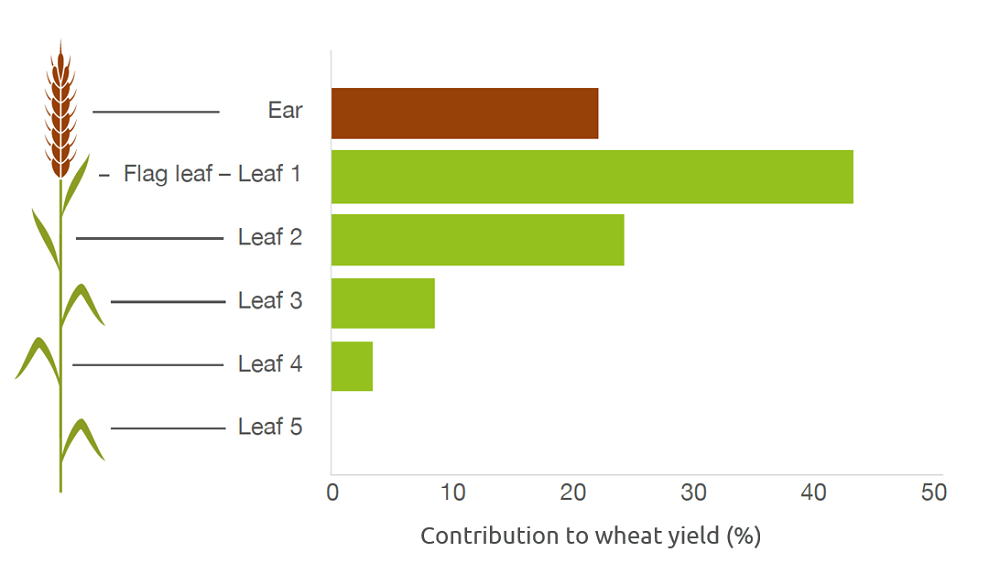- Home
- Knowledge library
- Introduction to foliar disease management in cereals
Introduction to foliar disease management in cereals
Foliar diseases can accelerate senescence of the top leaves and reduce cereal yields. Some can also spread to the ears and grains, affecting quality. Integrated pest management (IPM), including the use of well-timed fungicide sprays, is often essential to keep problematic pathogens in check.
Cereal disease management homepage
Cereal yield formation: contribution of leaves and ear
In wheat, infections on leaf one (flag leaf, fully unrolled at growth stage 39) and two have the greatest impact on yield.
 AHDB
AHDB
In barley, earlier infections (before stem extension, growth stage 31) are relatively important, as they restrict tillering. In addition to yield losses, diseased barley crops are associated with higher grain nitrogen content.
Initial infection of cereal crops and the ‘latent period’
A cycle of leaf emergence, infection, latent period and symptom expression applies to most foliar diseases.
The ‘latent period’ is when a fungus grows within the leaf with no visible symptoms.
Fungicide control is much more effective in the early phases of the latent period.
The latent period varies considerably between pathogens and periods are shorter at higher temperatures.
Generally, latent periods can be as short as 4–5 days (e.g. mildew and brown rust) and symptoms can show before leaves fully expand.
Septoria tritici has a long latent period (14–28 days). In summer, when the latent period may be 14 days, fungicides may provide eradicant control at the beginning of the latent period.
Later on, infection may be so far into the latent period that no fungicide, at any dose, will control the fungus, even though there may still be no visible symptoms on the leaf.
Importance of spray timing and latent period
.PNG) AHDB
AHDB
Latent periods, fungicide activity and spray timing in wheat (example based on septoria tritici)
.PNG) AHDB
AHDB
Spread of infection from within crops
As stems extend and upper leaves emerge, crops tend to grow away from disease.
In wheat, newly emerged leaves appear to be free from septoria tritici between growth stages 32–39.
However, the crucial final three leaves are at risk as soon as they emerge. By this stage, disease lesions on lower leaves are the most common source of infection of emerging upper leaves.
Whether disease develops on upper leaves depends on varietal resistance, crop management and weather.
Notes on fungicide timings
- The period or ‘spray window’ for effective disease control is relatively narrow
- A well-timed spray can avoid the need for higher doses or extra sprays
- A decimal growth stage (GS) key is often used to target sprays
- However, to protect the key yield-forming leaves, target fungicide treatments to leaf emergence, rather than the growth stage
- The optimum spray timing is when a leaf has just fully emerged
Fungicide effects not entirely linked to control of visible disease (e.g. canopy ‘greening’ or growth regulatory effects) may also increase yield.
Keep wheat and barley crops healthy during grain fill (growth stages 71–81) to help maximise fill and grain size.
Foliar disease control (T1, T2 and T3) in winter wheat
.png) AHDB
AHDB
Foliar disease control (T1 and T2) in winter wheat
.png) AHDB
AHDB
Potential control level that can be achieved on each of the top three wheat leaves for spray timings from GS31 to GS59. Solid line indicates septoria tritici. Dashed line estimates yellow rust (faster cycling). The interval between T1 and T2 is particularly important
Further disease management information
Learn about the growth stages (GS) of cereals

